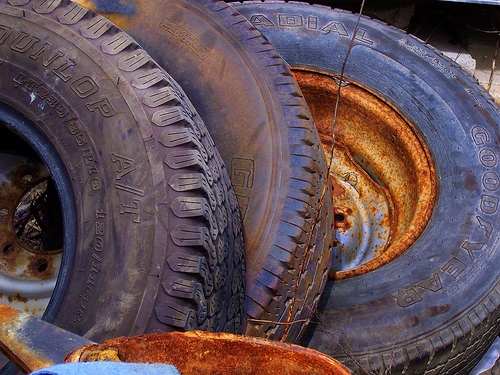
The family car is a complex machine full of components that could fail at any time, sometimes resulting in property damage or personal injury. Among the components that typically fail are tires, which have a definite life span and mileage limits that contribute to safety factors. The National Highway Traffic Safety Administration estimates that about 400 fatalities annually may be attributed to tire failures.
Few tire makers are willing to place their reputation, or liability, on the line by naming a mileage number that tires should last. Tire manufacturers are even more vague when making statements about their "original equipment" tires, most offering no warranty whatsoever. Goodyear, a major-brand tire maker says its website that the company "does not offer a written mileage promise on any tires supplied as original equipment." The same site goes on to state, "Many of our authorized retailers offer specific mileage warranties on several lines of tires sold as replacement tires, including some tires that are used as original equipment."
Even though National Highway Traffic Safety Administration (NHTSA ) website stops short of listing tire mileage limits, it does warn against driving on tires that are more than 10 years old. The organization also recommends that tires should be rotated from rear to front and side to side every 7,500 to 10,000 miles for more even wear and longer life.
TireRack.com is one of the few websites that names mileage numbers, stating, "Today [tires] range from 30,000 miles to 90,000 miles." But their statement adds that not all drivers will see the same results due to, "The variety of road conditions and geographic influences encountered across the country." How long tires should last is based on a multitude of factors, some beyond the driver's control.
Keeping tires properly inflated is an easy, though often overlooked, aspect of car care. NHTSA's Promoting Tire Safety section states, "Under-inflated tires are the leading causes of tire failure." They also recommend to checking tread by inserting a penny into the tread (head down); if any part of Lincoln's head is covered by the tread, the tire is considered safe.
On the side of every tire is listed its inflation minimum and maximum, as well as maximum load rating, as certified by the Department of Transportation.